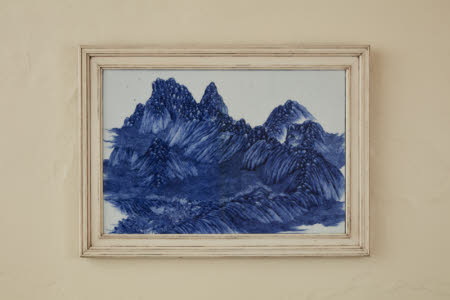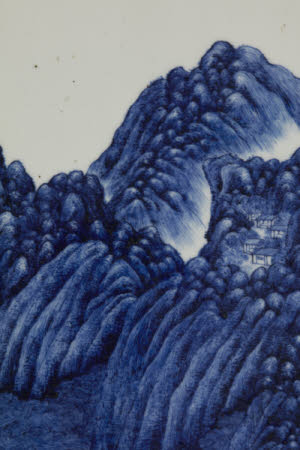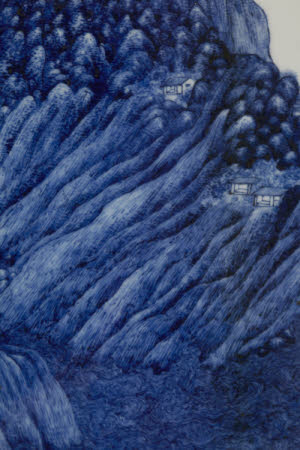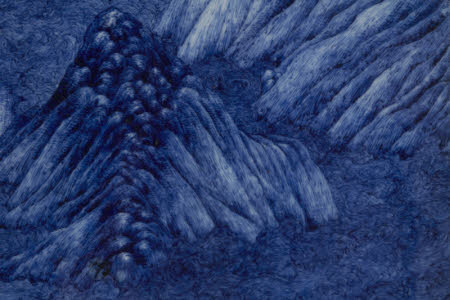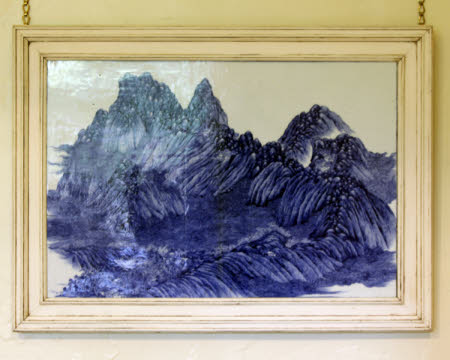Nippon Yamato no kuni Kinpu-san no shinzu (True view of Mount Kinpu in Yamato-Japan)
Kawamoto Masukichi I (1831 - 1907)
Category
Ceramics
Date
1870 - 1880
Materials
Porcelain decorated in underglaze blue, painted wooden frame.
Measurements
570 mm (H)820 mm (W)680 mm (H)935 mm (W)
Order this imageCollection
Greenway, Devon
NT 119526
Summary
Plaque, porcelain, rectangular, by Kawamoto Masukichi I (1831–1907), Seto, Owari Province (present-day Aichi Prefecture), Japan, probably 1870s, depicting Mount Kinpu in densely worked underglaze blue on a white ground, inscribed on the back Nippon Yamato no Kuni / Kinpu-san no shinzu / Owari no Kuni no Seto / Kawamoto Masukichi sei (True view of Mount Kinpu in Yamato-Japan, by Kawamoto Masukichi of Seto in Owari Province).
Full description
Kawamoto Masukichi I was a Japanese ceramics innovator active during the second half of the 19th century, when Japan was forced to open up to international trade. He produced ‘art’ ceramics for export to the West and exhibited at international exhibitions, including those at Vienna in 1873 and at Paris in 1876. A similar plaque by Masukichi I, depicting Mount Fuji and exhibited at the 1873 Vienna exhibition, is in the collection of the Museum für Angewandte Kunst (MAK), Vienna, inv. no. KE 2071. The dense painterly way in which the rocks and mountains have been represented, as if in the process of transforming themselves into writhing dragons, is reminiscent of the work of 17th-century Chinese scholar amateur painters (Dong Qichang and the so-called 'four Wangs'), who were in turn emulating the manner of the monk-artist Juran (active second half 10th century; see Harrison-Hall 2017). The adoption of this style by Masukichi I, as well as the plaque or ‘picture’ format, appears to have been part of a deliberate strategy to create ‘fine art’ ceramics that would appeal to Western tastes while also foregrounding East-Asian pictorial traditions. The depiction of mountains has a long tradition in Chinese art, but it also resonates with the Japanese practice of celebrating 'famous places' (meisho).
Makers and roles
Kawamoto Masukichi I (1831 - 1907), artist
References
Harrison-Hall 2017: Jessica Harrison-Hall, China: A History in Objects, London, 2017, pp. 244–5.
